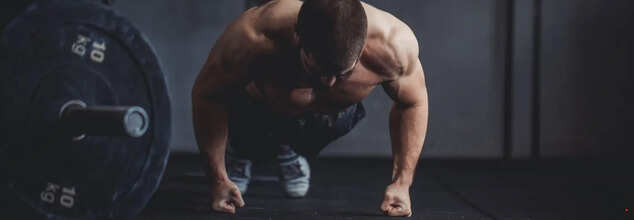
Image Credit: Youtube/@ThePatientStory
'I Thought It Was Just Constipation, Then I Was Hit With Terminal Cancer'- How This Everyday Symptom Turned Out To Be Stage 4 Bowel Cancer
For many, constipation is just an occasional nuisance—a side effect of diet, stress, or insufficient fluid intake. But for Springfield, Missouri, resident Shawn Michael, 48, what had appeared to be a minor case of digestive problems became a diagnosis that would change his life: terminal bowel cancer.
Michael, a loving father and entrepreneur, had no idea anything was wrong when he first had trouble passing stools last October. But when over-the-counter remedies didn't bring lasting relief, he began to suspect something more serious was going on. What ensued was a terrifying and tragic ordeal that he recounted in a viral YouTube video that has since racked up almost 100,000 views.
Michael first went for treatment at an urgent care facility, where physicians prescribed a strong laxative. The medication relieved his problem temporarily, but a persistent discomfort lingered. "Two days later, I could still physically feel something inside of me," he remembered. "It hurt so bad."
His symptoms escalated dramatically when he took a sip of a fizzy drink, triggering excruciating pain. Realizing this was no ordinary digestive issue, Michael returned to urgent care, where a CT scan revealed a mass in his colon. The nurse informed him that the indications pointed toward stage four colon cancer.
"The only thing on my mind was how to break it to my wife," he said. "She was sitting at home, waiting for me to come back."
Physicians swiftly scheduled Michael to have surgery taken out of the large blockage in his colon. When Michael awoke after the procedure, he discovered the tumor was big that his doctors were amazed that it had not ruptured. Unfortunately, however, the procedure also uncovered additional cancerous tumor growths along his omentum—a protective layer of fat that encloses the colon—as well as impacted lymph nodes.
In spite of their best efforts, doctors verified that the cancer had already invaded his liver, spleen, and lungs, a stage four diagnosis. Though this was heartbreaking news, Michael was optimistic, buoyed by his physicians' optimism for his age and overall health. "They told me not to think in terms of timeline," he explained. "With my general health, I have a very good chance of beating this."
Michael's treatment regimen involves chemotherapy for three months, followed by a hyperthermic intraperitoneal chemotherapy (HIPEC) procedure. This new treatment entails the direct infusion of heated chemotherapy drugs into the abdominal cavity, a technique thought to improve the effectiveness of the drugs and attack any remaining cancer cells more aggressively.
His is a stark reminder of increasing rates of bowel cancer among young adults. Last year, a study revealed an alarming increase in the number of cases of bowel cancer in adults between 25 and 49 years in 27 out of 50 countries from 2007 to 2017. The most rapid increases were seen in Chile, New Zealand, Puerto Rico, and England.
In the UK alone, cases of bowel cancer in adults aged 25-49 have risen by 52% since the early 1990s. What was once an older individual's disease, bowel cancer is now affecting younger populations, but many are not aware of the warning signs.
Symptoms and Treatment
Symptoms of bowel cancer can easily be mistaken for common digestive complaints, making early diagnosis challenging. Symptoms to be aware of include:
- Persistent constipation or alteration in bowel habits
- Blood in stool or rectal bleeding
- Abdominal pain, bloating, or a palpable lump
- Unintentional weight loss or weakness
Experts recommend that anyone suffering from these symptoms for over three weeks needs to seek medical care. Early detection dramatically increases the survival rate, which is why preventive health screening and check-ups are crucial.
Michael's is just one of a number of examples of the new geography of bowel cancer. One of the most famous recent cases is that of Deborah James, a.k.a. 'Bowel Babe,' diagnosed at the age of 35. James, who died in 2022, raised millions of pounds for cancer research and campaigned for early diagnosis and awareness.
Experts forecast that deaths from bowel cancer in the UK will increase by 2,500 a year by 2040, while diagnoses will go up by 10% during the same timeframe. In America, colorectal cancer is the second most common cause of cancer death among individuals below the age of 50.
Even with such dire figures, awareness is low. Most people still ignore signs such as constipation, dismissing them as trivial or passing pains.
Though his diagnosis is overwhelming, Michael is hopeful and persistent. His journey highlights the necessity of listening to the body and consulting a doctor when something does not feel right.
"If my story inspires even one person to get checked sooner, then it was worth telling," he said.
His experience is an important reminder: bowel cancer doesn't have to happen only to the older person. Young adults must also know the signs, stand up for their own health, and demand early screenings. With better awareness, earlier diagnosis, and ongoing improvements in treatment, more lives can be saved from this quiet but fatal disease.

(Credit-Canva)
Low Birth Weight Babies Are At Risk For This Eye Condition
Newborn babies require a lot of care, and many times even the parents can be unaware of certain conditions that may be causing them issues even at birth. One such condition which is much more prominent in premature babies with low birth weight is Retinopathy of Prematurity (ROP).
According to American Academy of Ophthalmology, when a baby is born this can lead to a problem called ROP. In ROP, the tiny blood vessels in the back of the eye, called the retina, start to grow in a strange way. These blood vessels are supposed to help the eye see, but when they grow wrong, they can cause big problems. Sometimes, they leak or bleed, which can lead to scarring inside the eye. If this gets really bad, the baby could lose his/her eyesight.
How ROP Affects the Eyes
Normally, the back of the eye, the retina, is like a screen that sends pictures to the brain. But for babies with ROP, the blood vessels that feed the retina don't grow right. They might leak or bleed, and this causes scars to form. These scars can shrink and pull on the retina, like pulling a sticker off a wall. This is called a retinal detachment. If the retina comes away from the back of the eye, the baby can't see properly. In really bad cases, this can lead to blindness. Doctors try to stop this from happening by treating the blood vessels before they cause too much damage.
A baby's eyes are still growing inside the mother's womb. The blood vessels in the retina start growing early and finish after the baby is born. If a baby is born too soon, these blood vessels might not have finished growing, and they can grow in a bad way. Babies born before 31 weeks, or those who are very small at birth (less than 1500 grams), have the highest risk of ROP. ROP doesn't have any signs that you can see at first. The only way to know if a baby has it is for a special eye doctor, called an ophthalmologist, to look inside their eyes.
What Are The Treatment Options For ROP?
There are times when the ROP is mild and gets better on its own. But if it's severe, doctors need to do surgery to stop the bad blood vessels from growing and save the baby's eyesight. The surgery focuses on the sides of the retina, so the baby can still see straight ahead. There are a few kinds of surgery. Laser surgery uses small beams of light to stop the blood vessels. Injections put medicine inside the eye to help them grow normally. For very bad cases, doctors might use a band around the eye or replace the gel inside the eye.
The main goal of ROP surgery is to stop the problem from getting worse and prevent blindness. Doctors are usually successful, but some babies might still have some vision loss. Even if the ROP stops, kids who had it need to get their eyes checked every year, even when they're grown up. This is because they might have other eye problems later in life. It's important to keep going to the eye doctor to make sure their eyes stay healthy.

Credit: Canva
How Your Workout Spot Can Affect Your Skin Health?
A recent study revealed that gym equipment and surfaces harbor billions of germs, which can harm the skin. These microorganisms come into contact with the epidermis, the outermost layer of the skin, increasing the likelihood of infections and rashes. Thus, you can host a lot of skin infections and problems.
Here's Is What Can Happen To Your Skin
1. Hot Tub Rash
Pseudomonas aeruginosa thrives in hot tubs or pools with inadequate disinfectant levels, such as chlorine. This bacterium can cause an itchy, red rash known as "hot tub rash" and may also lead to swimmer's ear. The rash typically appears within hours or days, mostly around the stomach area, and usually resolves on its own. However, if symptoms persist or recur, it is advisable to consult a dermatologist. Prevention: Always wash your swimsuit and shower with soap after using gym pools or hot tubs. You may also check with the gym staff to ensure they monitor chlorine and pH levels at least twice daily.
2. Impetigo
Impetigo is a bacterial skin infection causing red, itchy sores that ooze, burst, and form yellow crusts. It is primarily caused by Streptococcus (strep) and Staphylococcus (staph) bacteria. These bacteria can enter the body through cuts or abrasions, but they can also spread from person to person via contact or shared gym towels.
Prevention:
- To reduce the risk of impetigo:
- Avoid direct contact with oozing blisters.
- Refrain from sharing towels or personal items.
- Use a clean washcloth and towel if you have an active infection.
- Wash your hands frequently, but avoid excessive scrubbing.
Plantar warts are fleshy skin growths on the soles of the feet caused by the human papillomavirus (HPV). While many people carry HPV without symptoms, some strains can lead to various warts and even cancers. Plantar warts are stubborn and do not disappear on their own. Seek medical attention if you notice rapid growth, bleeding, or infection.
Prevention:
Wear shoes at the gym, especially in damp areas like showers.
Avoid picking or scratching warts, and keep your feet dry.
4. Ringworm
Fungi thrive in warm, moist gym environments, making ringworm a common issue. This contagious infection presents as red, scaly rings and can manifest as athlete's foot or jock itch. Over-the-counter antifungal creams can usually treat the condition, but persistent cases may require a dermatologist consultation.
Prevention:
Change socks and gym clothes frequently.
Disinfect or discard infected items.
Avoid sharing towels or personal belongings.
Shower after workouts and wear shoes in communal areas.
5. Staph Infections
Staph bacteria naturally reside on the skin but can cause infections if they enter through cuts. Shared gym surfaces, towels, and clothing can spread the bacteria. Common symptoms include red, swollen boils and skin that feels warm to the touch.
Prevention:
Keep cuts covered.
Avoid sharing personal items.
Wash hands regularly or use hand sanitizer.
Wipe down gym equipment before and after use.
Other Infections at the Gym
In addition to skin infections, gyms can be breeding grounds for respiratory illnesses and viruses like herpes simplex.
Common Colds and Flu
Cold and flu viruses spread through airborne droplets or contaminated surfaces. Getting a flu shot annually and maintaining hygiene can help prevent infections.
Prevention:
Wipe down equipment after use.
Use hand sanitizer frequently.
Wash hands thoroughly with soap and water.
Herpes
Herpes simplex virus (HSV) can spread through open sores and shared items like gym equipment and towels.
Prevention:
Avoid contact with visible sores.
Do not share utensils, towels, or personal items.
Wash your hands frequently, especially after workouts.

Credit: Canva
What Are The Three Body Types? Which One Can Build Muscle Fastest?
Building muscle mass offers more than just aesthetic benefits—it can help you achieve more balance, improve blood sugar management and boost mental well-being. However, the ease of gaining muscle can vary depending on your body type. If you've struggled to bulk up despite consistent effort, then probably you are mesomorph. On the contrary, if you are an ectomorph and an endomorph, then you'll struggle to gain weight.
What Are Body Types?
Body types, or somatotypes, are generally classified into three categories: mesomorphs, ectomorphs, and endomorphs. Mesomorphs, in particular, are known for their athletic build, with broad shoulders, narrow waists, and a natural propensity for muscle growth. According to personal trainer Phil Catudal, who spoke to a leading fitness publication, mesomorphs are easily identifiable by their proportions—if your waist and hips are about the same width, you might fall into this category.
Beyond physical appearance, mesomorphs have an edge in muscle-building due to their naturally higher muscle mass and lower fat levels. This implies that they can gain significant results from moderate workouts, making them well-suited to activities requiring strength and stamina.
What Is The Mesomorphic Advantage?
The mesomorphic advantage lies in their ability to build muscle quickly and maintain it. This is because they have a balanced composition of muscle and fat, which allows mesomorphs to achieve results with less effort than other body types. Unsurprisingly, many athletes possess mesomorphic traits. However, mesomorphs are not immune to weight gain. While they may gain fat as easily as muscle, they can shed excess weight effectively by combining a healthy diet with exercise.
What About Ectomorphs and Endomorphs?
Ectomorphs are the body types that are characterized by their lean frames and they often struggle to gain weight. Therefore, it is tougher for them to gain muscles, despite accurate exercise and diet.
On the other hand, endomorphs tend to carry more body fat, which can obscure their muscle mass and make workouts more challenging.
However, it is not impossible to gain muscles for these two body types. Tailored workouts and diet is the answer. Ectomorphs benefit from high-calorie, nutrient-dense diets and strength training with heavier weights, as the International Sports Sciences Association (ISSA) advises. Endomorphs, meanwhile, may focus on calorie control, muscle-building exercises, and high-intensity cardio to improve endurance and shed fat.
ALSO READ: 20-Minute Thigh Workout You Can Nail Without Getting Off The Floor
Regardless of the body type, there are a few exercises that help muscle gain. They include squats, deadlifts, bench presses, overhead presses and pull-ups.
1. Squats: A foundational exercise that targets the lower body, improving leg strength and core stability.
2. Deadlifts: A compound movement that strengthens the back, glutes, and hamstrings while enhancing overall power.
3. Bench Presses: A key upper-body exercise that builds chest, shoulder, and tricep muscles.
4. Overhead Presses: A shoulder-focused lift that also engages the core for stability and balance.
5. Pull-ups: A bodyweight exercise that develops upper-back, bicep, and grip strength.
© 2024 Bennett, Coleman & Company Limited

